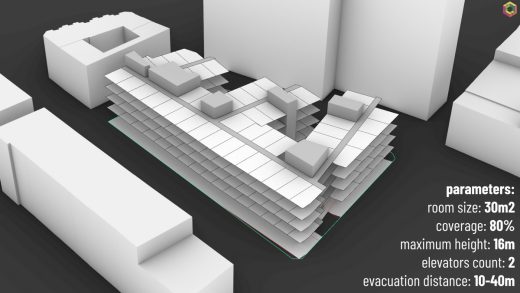Compelling architecture style through the ages guide, Online building advice, 3D design tips
Compelling Architecture Style Through The Ages Advice
1 May 2022
Architecture has marked specific variations from ancient ages to the modern era. Each era has its touch and specialties, which marks its distinctiveness in architecture. The architecture emerged from the ancient era before the Roman and Greek empire was formed.
In that era, humans were extensively involved in designing various constructive formations included in architecture. In many ancient books and studies, this era is referred to as the classical era. The idea of architecture with various construction techniques came to light in this era. Hence, the architectures are classified according to the period to which they belong. The architecture’s ideologies, structures, and uniqueness have varied with time. If you need to explore and get unique architecture ideas, visit us at living-architectures.com
Compelling Architecture Style Through The Ages Overview
Architecture Style: An Overview
Architecture style represents a type of artform for constructing a building that relates uniqueness and innovative features. The structure in each era is constructed in variable architectural styles comprising different genres and features. The style of architecture defines the regional characteristics, the material used, the method of construction, etc. Certain chronological factors impact the building styles with changing periods. Several other factors like fashion, regional beliefs, modernization, etc., with time-specific types of architecture style upgrading and developing with unique ideas.
Architecture Style Over Ages:
Architecture is flourishing from ancient to the modern era with several unique factors and a powerful base. From western and eastern countries, architecture styles vary according to the particular era. Below is the description of certain architectural styles which have transformed overages:
- Prehistoric Period: The era from 11300 BC to 3500 BC is considered the prehistoric era in terms of architecture. Most of the oldest architectural styles connection to the Palaeolithic (Old stone age), Mesolithic (middle stone age), and Neolithic (new stone age). In this age, the construction comprises geometrical patterns visible in this era’s construction. Construction of the Iron age and Bronze age are also included in this period. Many are included in UNESCO heritage sites where people love to explore different ancient stories and incidents. The architecture of this era consists of mud structures, Stonehenge, thatch, and cliff dwellings. Prehistoric architecture paved the path for architectural development for later periods.
- Ancient Egypt Period: This era ranges from 3050 BC and 900 BC. In this era, Egyptian architecture marks its importance till now. People visit to watch the ancient Egyptian monuments and buildings. Specific prominent p0yramids are the special mention in this category of ancient culture. In the current period, the construction technique of the pyramid is also employed and merged with certain construction ideas. Massive tombs with high and wide pyramids are the most markable examples of the ancient Egypt period. Certain monuments and palaces are also the referral aspect for present construction ideas. Their robust design and detailing remain till now after invading many army attacks, earthquakes, and many natural calamities.
- Classical Period Of Construction: The period ranges from 850BC to 456 AD. Many of the construction ideas of this era are influenced by Greek and Roman construction techniques. This era is popular for the construction ideas with pillars and columns on the façade of the building. The construction ideas in the building, palaces, and monuments have aesthetic and symmetrical designs. The building structures of this era are huge and powerful proportion during the construction.
- Byzantine Period: This period ranges from 527 to 565, which started when the capital of Constantine was shifted to Byzantium. This era marked the idea of construction with dome-type roofs, clerestories, apse, mosaic, and basilicas. These are some of the construction ideas which emerged in this era in all buildings and structures. This era has the ideologies of eastern and western traditions. The construction ideas are all the western, middle, and eastern regions. The dome-shaped roof idea is still followed to construct certain religious structures. The famous museum in Istanbul, Hagia Sophia, is a famous structure of the Byzantine period.
- Romanesque: The impact of Rome on Europe developed Romanesque architecture with its unique features, which marks prevalence during the 11th and 12th centuries. The architecture styles in this era comprised barrel vaults, sturdy pillars, decorative arcades, huge towers, long round pillars, etc. Each building of this era defines its symmetrical and definitive planned structures with simplified, sophisticated, and classy appearance. This era’s popular example of architecture is the Basilica of St. Sernin in Toulouse, France.
Conclusion:
These are the details of the varying architectural style overages. In each period, the architecture holds the thoughts, beliefs, and culture of that period. The architectural style has transformed itself with unique features, minute detailing, décor elements, innovative roof designs, and powerful base and pillars.
The architecture style has grown with time, making massive structures like palaces, museums, and buildings. Many of the ancient architecture references modern construction to get the detailing and expertise in present architecture.
Comments on this guide to Compelling architecture style through the ages article are welcome.
Architectural Design
Architectural Posts
Building Debate Articles – chronological list
Can computers replace architects?

Mackintosh Building Glasgow School of Art
Designing for Extra Care: What Can Covid Teach Us?
Remodelling existing buildings decarbonisation
Buildings
Architecture Design Articles
Comments / photos for the Compelling architecture style through the ages advice page welcome







